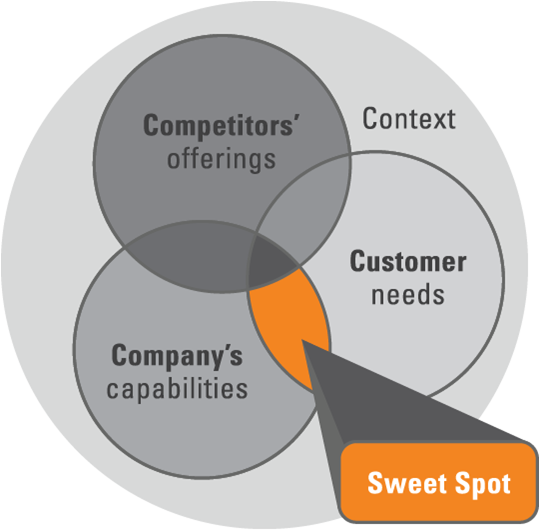Of the million or more messages you encountered in the last year, how many can you remember? How many were meaningful enough to shape your buying decision or to change your behavior?
Just recently, Cybersecurity Ventures published "The 500 Top Cybersecurity Companies". (that's not a typo) In 2016 VC's invested $3.1 billion in a record 279 cybersecurity startups- adding even more "next generation" technology. CTO's CISO's, and security decision makers are overwhelmed and inundated by vendors offering "solutions". It's now harder than ever to reach buyers of complex technologies, vendor's struggle to get their messages across and get lost in the noise.
There are a few key things you need to do to stand out in any marketspace and especially a complex one like cybersecurity where the margin for error is slim and those that don't stand out won't last long. While I do a lot of work related to network, software and device security for enterprise and "Internet of Things", these challenges are by no means unique to these markets.
One CEO's challenge - Does this sound familiar?
I recently had a call with the CEO of a rapidly growing company who was interested in our services. Before getting on the call I did the customary background information gathering to understand his business, products and competitors. He happens to be in a very crowded space and so I looked at some of the companies in the space and focused in on a few that seemed to be similar in product offerings and target audiences. (So much so that they could have been interchangeable). When I spoke to the CEO and said
“so you’re like company X”, it was clear that this wasn’t the first time he had heard that reference and stated that he really should do something about it and that he needs to do a better job of drawing a distinction between the two companies. What he in effect was saying was that he needed to have better positioning.
What is positioning?
There is often a debate about what positioning is, and what it is not. Confusing matters further, there are two proper usages of “positioning:”
- How your company is situated relative to its competitors;
- How your products and services are situated in the minds of customers and target audiences.

THREE KEY ASSUMPTIONS RELATED TO POSITIONING
Before you start the process of developing positioning there are three key assumptions to keep in mind. To gain the attention of your audience you must put yourself in their shoes and thoroughly understand the attitudes and behaviors of your customers and target audience. The following three assumptions provide a basis for developing this understanding.
The smartest people in the world are in your organization.
When it comes to our offering, we are the smartest because we know more about it. As marketers we frequently believe that prospects think as we do and already understand our offerings. Since prospects rarely share our thought processes or understanding, we must make it extraordinarily simple for them to become acquainted with our offering.
The only people who care about your offering are in your organization
As marketers, we sometimes believe that the market has waited years for an offering just like ours. Unfortunately, this is rarely the case – if it were true, all of us could retire. Therefore, we must identify our most important benefit and describe it to the market. Then, maybe, the market will care.
Everyone else is remarkably cynical.
It’s hard to believe, but the technology buyers have learned to doubt nearly every claim made by technology marketers. Effective positioning allows us to cut through cynicism by making our case in believable, compelling language.
Converging upon customers and competition for context
With these assumptions in mind you’ll now need to get an in-depth understanding of your customers and the competitive landscape to understand how they perceive the problems in their world, how you best address them with your offerings and how you describe this solution vis-à-vis your competitors.
Identify the sweet spot… Once you’ve done your homework you can map out the competitive landscape and look for whitespaces. Are there a number of competitors saying the same thing to the same audience? What are they saying and how are they saying it.? You need to analyze how your competitors are positioned, and whether there is any unclaimed space that aligns with the benefit you want to claim which addresses your customer’s most pressing problem.
You want to avoid duplicating messaging at all costs because your positioning statement needs to be unique – no other competitor is making the claim – and important – it addresses the target buyer’s No. 1 problem.
And then you can be special
You can get through the buyer’s filter and stand out from the crowd, but only with a benefit statement that addresses the primary concern that keeps your prospect awake at 2 am. Your target buyers will listen to your message when you demonstrate an understanding of their problem, and clearly communicate the benefit your product offers to solve the problem.
Sounds easy but there’s a lot more to it. You need a way to evaluate your positioning strategy and much more.

